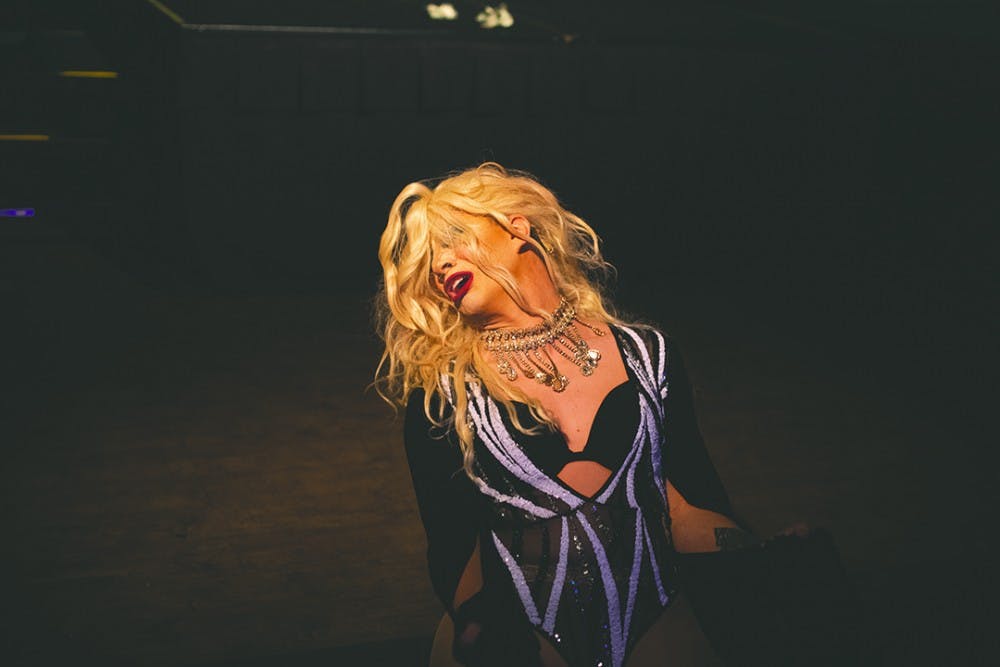For years, the underground art form of drag — dressing in overly-exaggerated clothes of the opposite sex — was a foreign concept to most. However, with the help of pop culture icons and “RuPaul’s Drag Race,” drag has slowly made its way into the mainstream, allowing for drag scenes such as Columbia's to flourish.
“Drag is for everyone," local drag queen Veronica La Blank said. "Drag is over the top, it’s in your face; it’s taking what is a ‘normal woman,’ as far as drag queens, and going above and over."
La Blank pointed out that drag is meant to overexaggerate the female figure. She also said drag emphasizes "the beauty that is a woman, because none of us would be here without women."
La Blank has been doing drag for about 12 years, and she has no plans of stopping anytime soon. Her first run-in with drag was when she entered into a talent show in high school because she needed $150 to pay a parking ticket, which just so happened to be the prize money. She didn’t win the contest, but she did become enamored with drag and how it made her feel.
“I’ve always had a drive just to be in front of people and perform, and drag is, to me, is the highest form of entertainment you can do," La Blank said. "Drag is whatever you want it to be, and it's everything."
Another queen in the area, Ebony Wood, has been doing drag for almost nine years, getting her start at a Halloween party as a freshman at USC. The feeling she got from performing was addictive, Wood said, because she became a local celebrity of sorts. Hearing her name called onto the stage and having people compliment her after shows developed what she called her "drag queen ego."
Like La Blank, Wood said drag can take many forms. It is art and entertainment that blurs gender lines, resulting in a multi-faceted impact on pop culture. Influential artists such as Lady Gaga and Madonna started from drag culture. Their over-the-top makeup, clothing and performances have roots in the drag and LGBTQ+ communities.
However, a distinction is made between the mainstream drag viewed on "RuPaul’s Drag Race" and the drag Columbia's queens perform. La Blank said she believes the exposure from RuPaul has been both a blessing and a curse for the drag community.
“After 'RuPaul’s Drag Race,' which got drag out there to every f— aspect of human culture around the world, which is great, but the downside is we’ve kind of lost some of that polish," La Blank said. "A lot of girls now don't get that chance to learn how to actually grow.”
For Wood, drag goes beyond art into something much more personal. She performs not only for the feeling or the money but also for the way in which it has changed her life.
“Really, every aspect of my life improved from having that level of confidence — my body image improved, my self-respect, self-care improved, my perception of art and how to work with people and business and meet people; it's all improved," Wood said. "Everyone should do drag once because of the feeling of being onstage is riveting and it's in the moment, and I think it’s an important life lesson.”
La Blank's drag daughter (a new drag queen La Blank became a mentor for), Fendi Moore, is the reigning Miss Outfest and new to the drag scene. She said she has also experienced personal growth from being a queen.
“Drag culture is history, it’s empowerment, it's something that unless you do, you don't have that privilege of getting to experience what it is," Moore said. "It's something that's liberating and amazing and it's hitting everything that I've needed in my life."
Like the other queens, Moore said she believes pop culture and drag culture are one and the same. However, while the idea of drag might be mainstream, she thinks the reason queens perform drag will never be mainstream. While some aspects of drag are well-known by the general public, the true meaning of drag is only known by those who have made it a part of their lives.
“There will forever be stigma about drag and people who do drag," Moore said. "No matter what we do, no matter how far we progress, there's always going to be that one person that has stigma or stereotype towards it.”
Despite those who might not support drag, Moore said it is an art form that should be experienced by everyone, and the hate has not deterred her.
“We’re loud, we’re proud and we’re gayer than ever,” Moore said.

